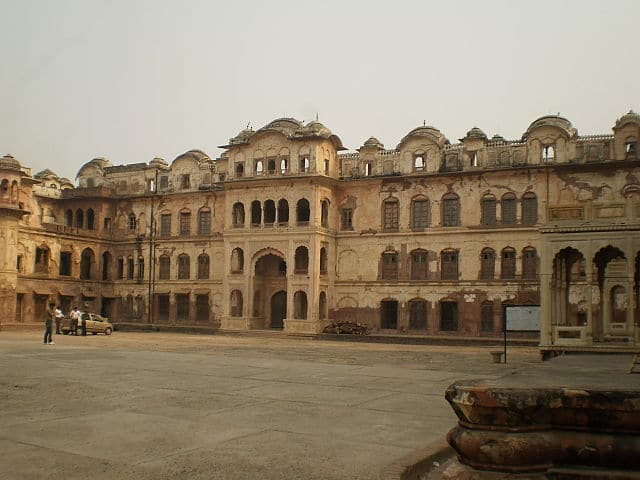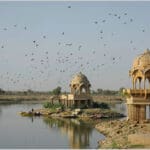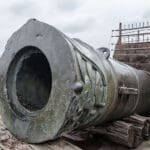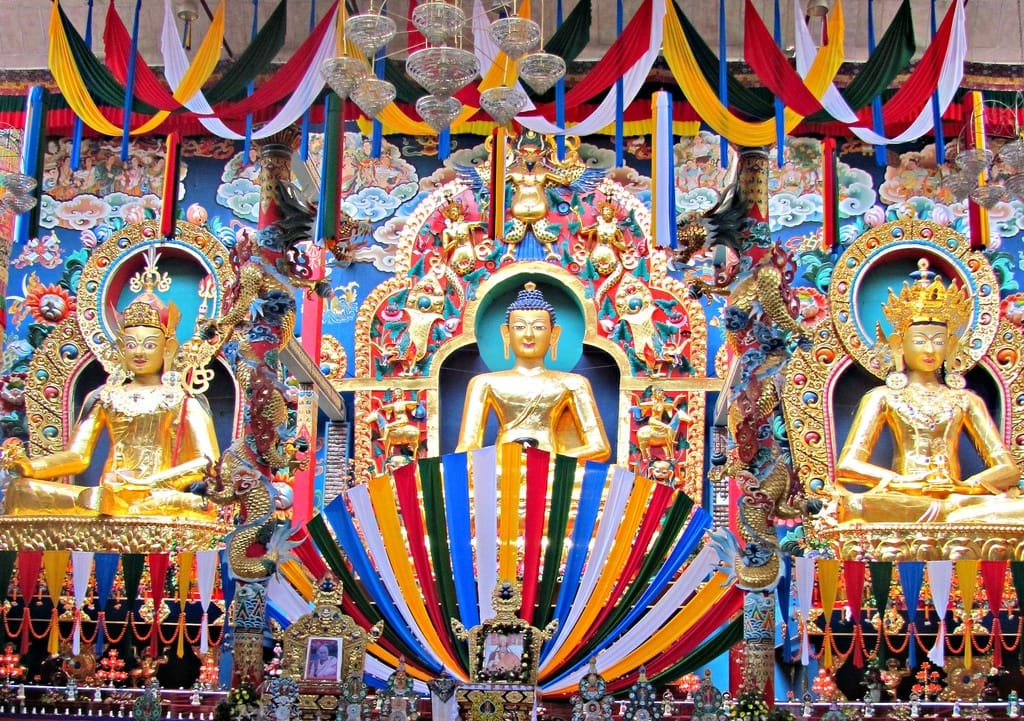Patiala is more than just a city (Places To Visit In Patiala) —it is a mosaic of Punjab’s royal legacy, artistic brilliance, and spiritual depth. Every avenue is woven with stories of grandeur, valor, faith, and the effervescent culture that defines this princely state. Embark with us as we unveil a meticulously expanded exploration of Patiala’s top three must-visit landmarks: each a unique testament to the city’s enduring glory, radiant traditions, and dynamic present.
- 1. Qila Mubarak: The Resplendent Citadel of the Maharajas
- Historical Overview: Birthplace of the Patiala Dynasty
- Exquisite Architecture and Design
- The Museum: A Treasury of Patiala’s Soul
- Present-Day Experience
- 2. Sheesh Mahal: A Glittering Ode to Patiala’s Artistry
- A Jewel of Glass, Light, and Imagination
- Interior Splendor: Paintings, Mosaics, and Frescoes
- Museum Collection: A Celebration of Cultural Wealth
- Lakshman Jhula: The Iconic Suspension Bridge
- Events and Living Heritage
- 3. Gurdwara Dukh Niwaran Sahib: Sanctuary of Faith, Healing, and Unity
- Origins Rooted in Compassion and Miracle
- Architectural Grace and Spiritual Calm
- Tradition of Seva: The Langar Experience
- Tips for Pilgrims and Visitors
- Beyond the Big Three: Embark Further Into Patiala’s Tapestry
- Patiala’s Living Heritage: Festivals, Music & Cuisine
- Celebrations and Fairs
- Music and The Patiala Gharana
- Culinary Trail
- Where to Stay: Recline In Royal Comfort
- Traveler’s Practical Guide
- Sustainable & Responsible Travel
1. Qila Mubarak: The Resplendent Citadel of the Maharajas
Historical Overview: Birthplace of the Patiala Dynasty
Founded in 1763 by Baba Ala Singh, Qila Mubarak is the formidable foundation upon which Patiala’s destiny was crafted. Starting as a mud fortress, it evolved into one of North India’s iconic palatial complexes—fortified with massive ramparts, stately courtyards, interconnecting palaces, and temples that echo the tales of Patiala’s erstwhile kings and queens.
Exquisite Architecture and Design
The fortress is a living archive of Sikh, Mughal, and Rajasthani influences, seamlessly blended into a signature style visible in its arches, jharokhas, gilded chambers, and ornamental gardens. The Darbar Hall stands out with its high ceilings, golden canopies, and frescoes that narrate tales of power and patronage.
Move deeper into the Quila Androon, the “Inner Fort”, and encounter thirteen themed royal chambers, each meticulously decorated with priceless artifacts—antique weaponry, ornate thrones, centuries-old manuscripts, and sartorial treasures of the erstwhile rulers. The Sheesh Mahal (Mirror Chamber) inside Qila Mubarak offers a dazzling interplay of mirrorwork and mural artistry, reminiscent of legendary court gatherings.
The Museum: A Treasury of Patiala’s Soul
Qila Mubarak doesn’t just preserve artifacts; it preserves heritage. Its museum features ceremonial swords, bejeweled turbans, imperial decrees, portraits, jewelry, and objects of daily royal life, each telling a profound story of bravery, wisdom, and artistic evolution.
Present-Day Experience
From guided tours that immerse you in royal ritual to interactive storytelling sessions for the family, Qila Mubarak is continuously revitalizing its offerings. Seasonal exhibitions, light-and-sound shows, and digital installations bridge the ancient with the contemporary.
-
Timings: Open daily (except Mondays), 10AM–6PM.
-
Best Time to Visit: Early mornings to beat the crowds and enjoy optimal lighting.
-
Visitor Tips: Engage a local guide, carry a camera for architecture photography, and sample local breakfast at the adjacent bazaar.
2. Sheesh Mahal: A Glittering Ode to Patiala’s Artistry
A Jewel of Glass, Light, and Imagination
Constructed in the 19th century as a pleasure palace by Maharaja Narinder Singh, Sheesh Mahal represents the zenith of royal artistry and luxury. Its very name—meaning “Palace of Mirrors”—hints at the kaleidoscopic wonder awaiting inside.
Interior Splendor: Paintings, Mosaics, and Frescoes
Every wall and ceiling is adorned with thousands of delicately placed Belgian mirror shards, reflecting sunlight into a dance of color and radiance. The frescoes bring to life scenes from Punjab’s history, Hindu mythology, courtly amusements, and epic poetry. The interplay of glass and color is not merely decorative—it’s an immersive experience.
Museum Collection: A Celebration of Cultural Wealth
-
Miniature Paintings: Rare works from the Kangra, Patiala, and Rajasthani schools.
-
Manuscripts & Medals: Ancient scripts and war honors that trace the rise of Patiala’s rulers as statesmen and patrons of the arts.
-
Sculptures & Photographs: Every exhibit narrates an anecdote—be it a royal procession, a festival, or a significant diplomatic overture.
Lakshman Jhula: The Iconic Suspension Bridge
Mirroring the famed bridge in Rishikesh, Sheesh Mahal’s suspension bridge is both a landmark and experiential walkway, stretching gracefully across the tranquil lake. It offers spellbinding perspectives of the palace, grounds, and city skyline—ideal for photographers and romantics alike.
Events and Living Heritage
Sheesh Mahal pulsates with life, regularly hosting music festivals, poetry symposiums, and art exhibitions. These events transform the palace from a museum into a living, breathing celebration of Punjabi creativity.
-
Timings: Open year-round, except Mondays and select holidays.
-
Insider Tip: Visit during spring for blooming gardens and open-air cultural performances.
3. Gurdwara Dukh Niwaran Sahib: Sanctuary of Faith, Healing, and Unity
Origins Rooted in Compassion and Miracle
This sacred Gurdwara, revered throughout Sikhism, springs from a legend of Guru Tegh Bahadur Ji’s miraculous intervention in 1672, ending a deadly epidemic and establishing the site as one of hope and healing. The name ‘Dukh Niwaran’ translates to ‘Remover of Suffering’, and the shrine fulfills this promise through spiritual solace and selfless service.
Architectural Grace and Spiritual Calm
White marble gleams under the Punjabi sun, crowned by golden domes and intricate carvings. The centerpiece is the Sarovar—a holy water tank believed by many to possess healing properties. Devotees participate in holy dips, while devotional hymns fill the air, reverberating from the prayer hall day and night.
Tradition of Seva: The Langar Experience
A hallmark of Sikh hospitality, the Gurdwara’s Langar Hall serves simple, nourishing meals to all—regardless of religion or status. The act of communal dining, volunteer service, and humility fosters a powerful sense of unity and equality.
Tips for Pilgrims and Visitors
-
Etiquette: Cover your head, remove shoes, and wash hands before entering. Modest dress is appreciated.
-
Highlights: Attend the early morning or evening Ardas (prayer), and spend moments in meditation by the tank.
-
Accessibility: The complex is designed to be inclusive for disabled and elderly visitors.
Beyond the Big Three: Embark Further Into Patiala’s Tapestry
-
Baradari Gardens: Historic marble pavilions, mature trees, walking trails, and colonial-era relics—a retreat for botanists and seekers of tranquillity.
-
Moti Bagh Palace: Once the world’s largest private residence, Moti Bagh marvels with its ornate carvings, sprawling courts, and now houses the National Institute of Sports.
-
Kali Mata Mandir: A southward homage to Kolkata’s Siddh Peeth, vibrant with religious rituals throughout the year.
-
Adalat Bazaar: The epicenter of ethnic shopping—embroidered phulkari dupattas, hand-crafted Patiala juttis, jewelry, and the city’s signature turbans.
-
Heritage Walks: Explore cobbled lanes, havelis, old schools, and bazaars pulsating with living tradition.
Patiala’s Living Heritage: Festivals, Music & Cuisine
Celebrations and Fairs
Witness the spectacle of Lohri, Baisakhi, Gurpurab, and the Patiala Heritage Festival—where folk dancers, master musicians, and culinary artists converge to animate the city’s streets.
Music and The Patiala Gharana
The city’s musical legacy is legendary—home to maestros in Hindustani classical, ghazal, and traditional instruments. Attend recitals, workshops, and spontaneous performances at temples and palaces.
Culinary Trail
Indulge in the renowned ‘Patiala Peg’ (notorious for its hearty pour of whisky!), creamy Shahi Lassi, buttery parathas, sizzling kebabs, and desserts like sohan halwa and patisa. Experience this culinary tradition at classic dhabas or splurge at royal banquets.
Where to Stay: Recline In Royal Comfort
-
Neemrana Baradari Palace: Restored with period furniture, lush courtyards, and regal suites.
-
Starred and Boutique Hotels: Modern amenities blend with heritage architecture throughout the city.
-
Homestays: Quaint, restored havelis offer personalized, culture-rich hospitality.
Traveler’s Practical Guide
-
Best Time: October–March, for balmy weather, festivals, and open-air events.
-
How to Reach: Patiala is well connected by bus, train, and highway to Delhi, Chandigarh, and major northern cities.
-
Getting Around: Cycle rickshaws, autos, taxis, and even walking—Patiala’s historic center is compact.
-
Local Language: Punjabi and Hindi are most common, with widespread English in tourist sectors.
-
Shopping Tip: Bargain for handcrafted wares in bazaars—supporting local artisans.
Sustainable & Responsible Travel
Support community tourism. Respect local dress codes in sacred spaces. Reduce waste and carbon footprint by using public and eco-transport, and cherish Patiala’s culture for future generations.
Frequently Asked Questions (FAQs) – Places To Visit In Patiala
-
What are the top three attractions in Patiala?
Qila Mubarak, Sheesh Mahal, and Gurdwara Dukh Niwaran Sahib are the most celebrated landmarks. -
When is the ideal season to visit Patiala?
October to March, when weather is pleasant and festivities abound. -
Can tourists easily communicate in English?
Yes, English is commonly spoken in hotels, restaurants, and tourist venues. -
Which foods are must-tries?
Patiala’s lassi, parathas, tandoori fare, sohan halwa, patisa, and street delicacies. -
Where can I shop for local crafts?
Adalat Bazaar and major street markets—famed for phulkari, juttis, turbans, and ornaments. -
Is the city safe for solo women?
Patiala is considered safe, but standard precautions are advised (especially after dusk). -
How long does it take to explore the city?
2–3 days give enough time for sightseeing and culture. -
Which festivals are unique to Patiala?
Besides Punjab’s main festivals, the Patiala Heritage Festival is a city highlight. -
Are non-Sikhs welcomed at Gurdwaras?
Absolutely, all are welcome at Sikh temples. -
Is photography permitted?
Commonly allowed, except inside museums or sanctum areas—check signage. -
How do I book a guided tour?
Hotels, tour agencies, or the Patiala Heritage Walk Group. -
Are luxury accommodations available?
Yes, heritage hotels and premium stays abound. -
What is the ‘Patiala Peg’?
A legendary, generous whisky serving, symbolizing hospitality. -
Any dress code for shrines?
Modest attire; cover head in Sikh temples (scarves provided). -
Is the city accessible to disabled travelers?
Many key sites are accessible, but always check in advance for arrangements.



















